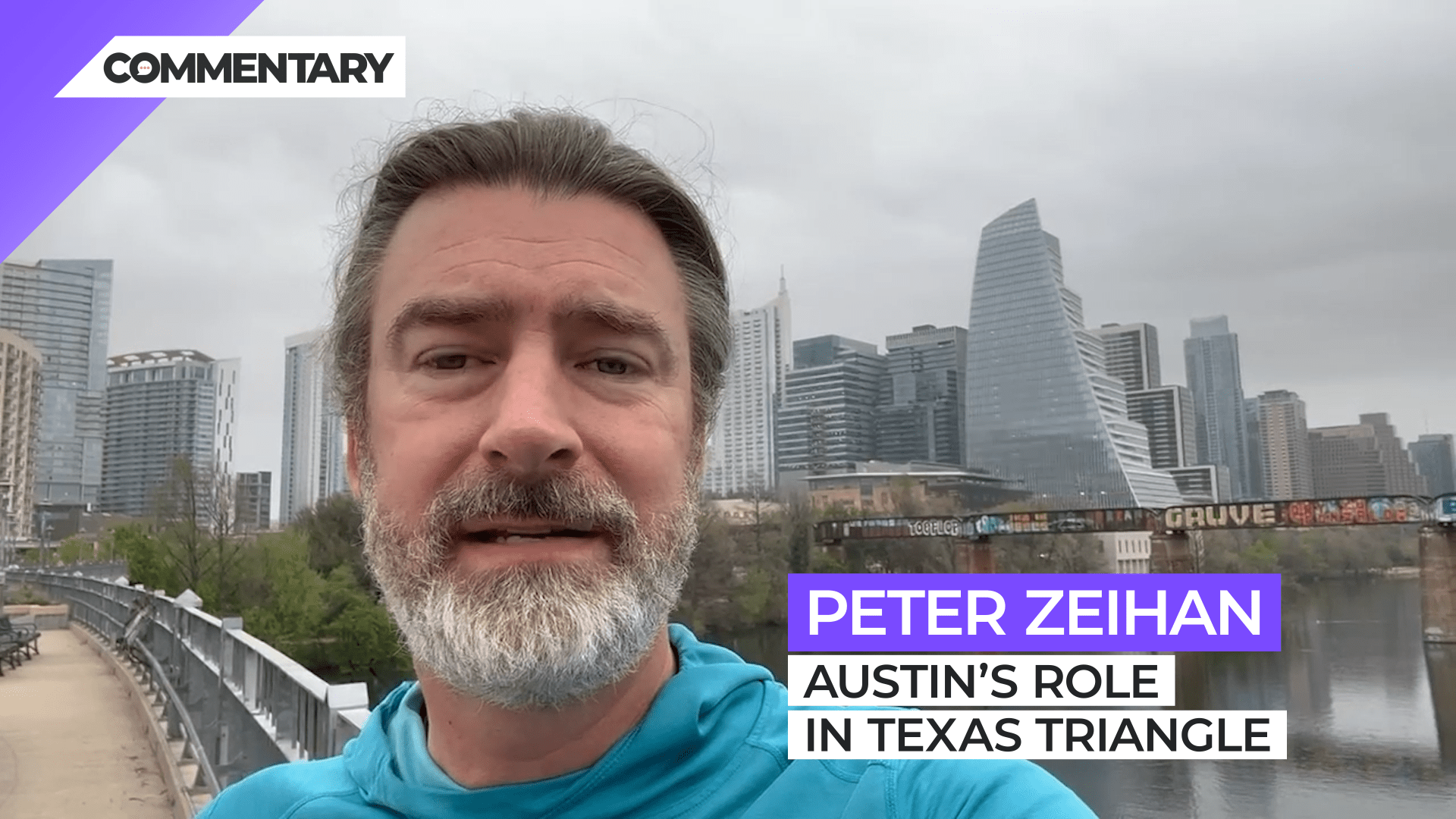
Commentary
-
Our commentary partners will help you reach your own conclusions on complex topics.
Hey everybody, Peter Zeihan here coming to you from the lar passenger bridge in downtown Austin. As some of you remember, this was my home for 20 odd years. And I am proud to say that the city is still doing strong. Austin is at the middle of what is called the Texas triangle, which has been the fastest growing economics and urban zone in the western hemisphere for about 25 years now. And the story is in the neighborhood. So Texas is a red state, so the taxes are low. In fact, in the state of Texas, there is no income tax at all. But this is a relatively Blue City. So it has a reasonably high level of city services. That sort of combination has really helped urban areas in a similar match places like Lexington, Kentucky or Atlanta, Georgia. But there’s more than that. The Texas triangle, as you might expect, has three major urban zones of which Austin is not technically one. The big three are San Antonio Houston and Dallas. Houston is obviously an energy and heavy manufacturing hub. Dallas is an automotive and aerospace hub. Both of them are financial centers in their own way. And then San Antonio has lower cost of living and lower labor costs. And so is great at mass manufacturing, especially in automotive. Where Austin plugs in is on the higher end. There’s an area to the northwest of town called Silicon Hills, which as you might guess, is kind of an echo of Silicon Valley. But where Silicon Valley focuses on the base research, and being a hotbed of core tech innovation, Austin takes a lot of that research and then turns it into operationalized development plans, which are then applied throughout the rest of the Texas triangle. So it’s not that awesome to do this by itself. But Austin plugged into the triangle makes it the perfect interlocutor for everything for turning modern manufacturing into reality. And if you see kind of behind me, you know, there’s quite a skyline here. This is a city that as recently as 1985, only had about 600,000 people and now there are over two and a half million in the entire metro. And all of the buildings in the immediate background. Were not there when I moved to Austin back in 2000. And the ones a little bit further back. Now maybe two thirds of those are new in the last 20 years. So Austin has been one of the top 10 fastest growing urban centers in the Western Hemisphere now for almost 30 years straight. And even though it is the most expensive city in Texas, and even though the cost of living has now risen above the national average. It has a long way to grow because it can physically grow to the northwest, the North, the Northeast, the east, the southeast, the South and the Southwest very easily. And the land just to the west where I used to live is called the hill country. And as you might guess it’s hilly but not mountainous. This is an advantage that a lot of the Texas cities have they can just physically expand with reasonably few restrictions. Talk to you guys later. Bye
-
Can other nations replicate success of US shale revolution?
The “shale revolution” has provided the United States with a bountiful domestic supply of oil. But extracting oil from shale is a highly technical process, and it is also dependent on specific geological formations. Straight Arrow News contributor Peter Zeihan tackles the question of whether or not other nations might be able to replicate the…
-
Peace between Israel and Iran, at least for now
A series of recent airstrikes between Israel and Iran inflamed fears of a wider regional war erupting in the Middle East. That concern now seems to have paid off, after third-party countries around the world successfully intervened and talked down military hardliners in both Israel and Iran in order to avoid such an outcome. Israel’s…
-
Global internet in a precarious state, but that could be a positive
Over 500 underwater cables span over 870,000 miles worldwide, serving as the foundation of the modern global internet. Despite their critical role in facilitating communication, these cables often go unnoticed, even as the amount of data transmitted through them has surged. So what happens if the cables fail? Straight Arrow News contributor Peter Zeihan contends…
-
Water wars are an unlikely future
Foreign policy writers have long warned of the possibility that clean drinking water might become “the next oil” — that is, that major wars might be fought around the globe over access to potable water. With expanding populations and finite water supplies, these critics argue that humans will inevitably fight each other to secure drinking…
-
Are Russia’s hypersonic missiles too good to be true?
Russia has reportedly used five of its new hypersonic Zircon missiles to target Kyiv since the beginning of 2024. Russia claims that these sea-based missiles, boasting a range of 625 miles and capable of traveling at nine times the speed of sound, are part of its family of “superweapons” aimed at penetrating the U.S. missile…
Latest Stories
-
 Getty Images
Getty Images
Report: AI could overwhelm system made to curb online child exploitation
-

TikTok bill signed into law, an actual app ban could still be years away
-
 Getty Images
Getty Images
How Martha’s Vineyard migrants secured special visas intended for victims of crime
-
 Getty Images
Getty Images
Collateral damage: Why Apple’s iPhone sales are getting crushed in China
-
 Getty Images
Getty Images
FTC votes to ban non-compete clauses
Popular Opinions
-
In addition to the facts, we believe it’s vital to hear perspectives from all sides of the political spectrum.
Latest Opinions
In addition to the facts, we believe it’s vital to hear perspectives from all sides of the political spectrum. We hope these different voices will help you reach your own conclusions.
The opinions published in this section are solely those of the contributors and do not reflect the views of Straight Arrow News.

















Latest Commentary
We know it is important to hear from a diverse range of observers on the complex topics we face and believe our commentary partners will help you reach your own conclusions.
The commentaries published in this section are solely those of the contributors and do not reflect the views of Straight Arrow News.
Peter Zeihan
Geopolitical StrategistPeace between Israel and Iran, at least for now
Global internet in a precarious state, but that could be a positive
Water wars are an unlikely future
Dr. Frank Luntz
Pollster and Political Analyst‘Take the job seriously’: Why Americans are fed up with Congress
‘If we can shrink it, it will stop growing’: Americans talk debt, deficit
‘I don’t think they care’: Undecided voters explain their reasons
Pete Ricketts
U.S. Senator for Nebraska